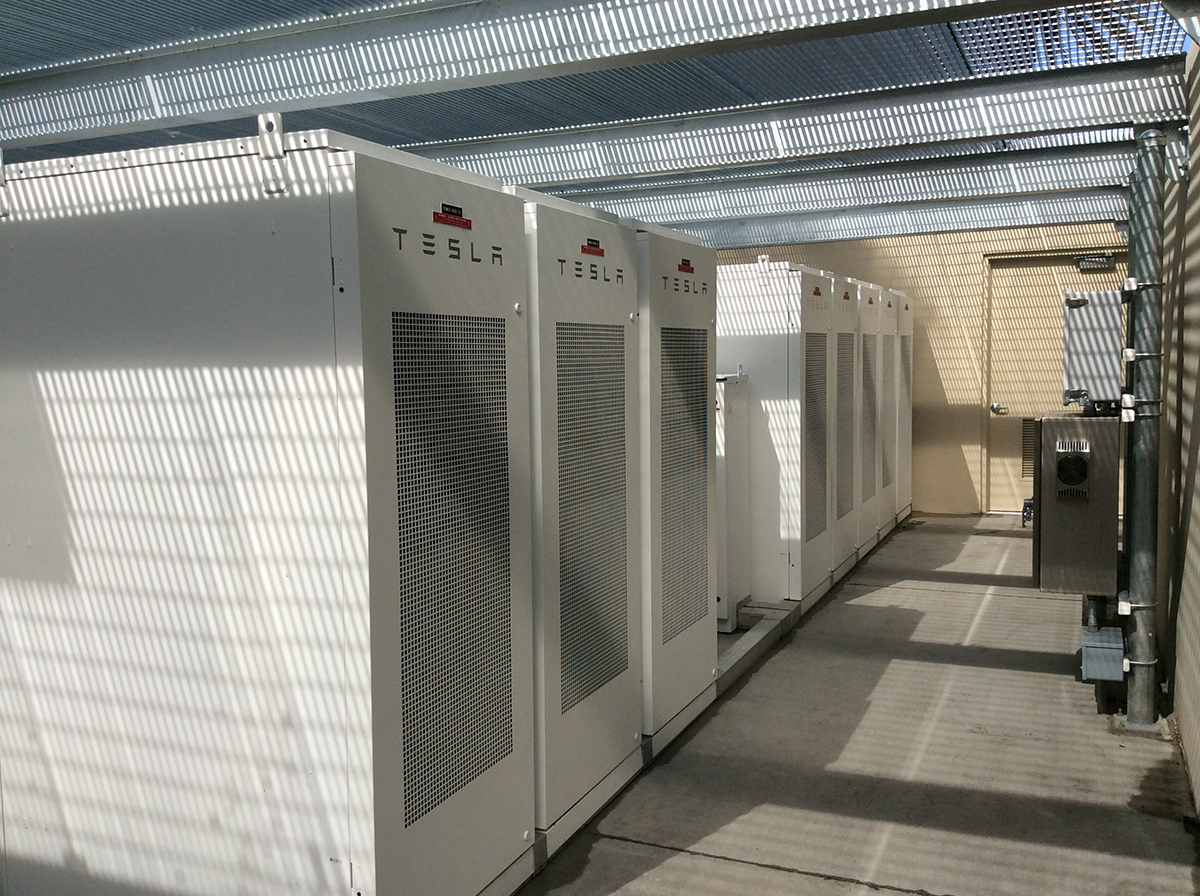Finding Power in Energy Storage
Battery technology has made enormous strides in a few years. An update on advances and challenges.
By Jeffrey Steele
As investors and property managers seek strategies for cutting operations costs and making assets more competitive, energy storage innovations hold rich potential for revolutionizing control over cost and reliability. Trailblazing advancements to date have been remarkable, and experts say that the tools on the horizon are likely to be even more powerful.
Two varieties of electrical storage, thermal and electrical, are particularly relevant for property operations and will achieve substantially higher market penetration over coming years, predicts Daniel Nall, vice president and regional director, high-performance solutions for Syska Hennessy, a New York City-based consulting, engineering and commissioning firm.
In the thermal category, the dominant method is ice storage, in which a compressor that would normally produce chilled water is placed in a large storage tank, explained Brad Pease, vice president of building science at Paladino and Co., a Seattle-based sustainability consulting firm. “The technology is popular because it shifts the peak load to less expensive times when energy is typically cleaner,” he said. “Using ice systems enables building owners to downsize their chilling equipment because it doesn’t need to be sized for peak demand.”
Ions Make Inroads
Today, the ice storage method faces competition from other approaches. Phase change storage, to name one, is making inroads. “Ice storage requires the chillers to provide cooling for the freezing cycle at less than 24 degrees Fahrenheit, while the temperature for phase change thermal storage can be much higher, and can be customized to the project by altering the mix of phase change materials,” Nall said.
Meanwhile, electrical storage technologies are also impacting the market. Tesla has heavily marketed its Powerwall lithium ion battery storage to commercial and residential property owners. While lithium ion batteries are by far the most advanced and accepted technology available for electricity storage, other technologies under development may be more relevant for some applications, Nall said.
For example, the capacity of flow batteries is determined by the available quantity of liquid electrolyte. Increasing the capacity of the tanks containing charged and discharged electrolyte can add significant capacity to flow batteries, he said.
Despite improved technology, the return on investment for storing energy in batteries “is not there at the building-size scale,” Pease said. But given the drop in solar panel installation costs from $8 to $3 per kilowatt, he hopes to see “the same technology shift in batteries.”
Weighing Opportunities and Challenges
“Energy storage affords numerous opportunities for cost savings, supply reliability and sustainability“, said Elliotte Quinn, an energy and construction attorney with Charleston, S.C.-based law firm Parker Poe.
Energy storage enables commercial property owners to trim costs through load shifting, the process of obtaining power during off-peak hours and storing it for use during costlier peak hours, Quinn said. Emergency energy backup represents another opportunity. Owners viewing energy reliability as a priority no longer need diesel generators to back up their energy systems. Finally, owners focused on sustainability goals can use storage capacity to store solar power, employing it at night or on overcast days, Quinn said.
“There’s also opportunity to sell energy back in the wholesale market,” Quinn reported. “But if you do that, you’re making yourself subject to federal regulation, meaning you are going to have to make filings with the Federal Energy Regulatory Commission [FERC] and comply with federal statutes and regulations.” Only very large property owners will undertake wholesale selling, so that will be the province of a more specialized market of energy developers, he predicted.
He noted that an order issued by FERC earlier this year should allow storage resources, defined as any energy storage facility, to participate more fully in the wholesale market. “They’re participating now to some extent, and this order will allow fuller participation,” Quinn said. “But again, that gets you into having to comply with the Federal Energy Regulatory Commission’s statutes and regulations.”
By most estimates, energy storage costs are dropping, yet the challenge of predicting payback accurately can make it difficult to fund multimillion-dollar investment in the technology, observed Kyle Wamstad, an Atlanta-based attorney with Eversheds Sutherland (US) LLP who advises clients on financing, development and operation of energy storage systems.
Cost represents only one of several challenges presented by energy storage. Employing a relatively new technology brings risks of its own, Quinn noted. Lithium ion batteries offer a maximum of four hours of storage. “There are safety risks from battery fires,” he added.” You also have supply risks [because] the batteries use lithium and rare earth materials obtained from countries that may not be stable, or with which we don’t have the best trading agreements.”
What’s in Store for Storage?
Predictions for the future of energy storage vary widely. Pease believes that the field won’t change much in the next five years. The biggest gains, he said, will be driven by energy companies struggling to add enough capacity to meet the growth in demand. They will spur building owners and developers to install ice batteries to reduce peak demand.
Nall envisions phase change storage materials growing less costly, and expects to see the arrival of combined cooling source and thermal storage systems, a step that will help make the technology more accessible to owners. Also possible is the introduction of turnkey electrical systems, which would further ease implementation.
Another advent worth noting may be vehicle-to-grid storage. “As more and more people drive to work in electric cars, which are essentially batteries on wheels . . . those batteries can be used as a storage system for the grid or the building while the employees are at work,” Quinn said. “The interesting part is convincing vehicle owners to let someone else charge and discharge their car’s batteries.”
Energy storage’s Holy Grail may be the flow battery, Quinn said. Although lithium ion batteries eventually die, flow batteries never lose their charging capacity and can produce maximum output for much longer, without that four-hour limitation. Only one thing stands in the way of that goal, but it is a significant barrier, Quinn points out: “No one has been able to develop affordable flow batteries.”
You’ll find more on this topic in the CPE-MHN Mid-Year Update 2018.











You must be logged in to post a comment.